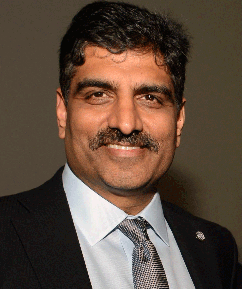 |
Page History
| Excerpt |
|---|
Given the pervasive use of e-commerce transactions and personal data storage in the cloud, society has an urgent need for a robust process that authenticates and protects the privacy and online assets of individuals and organizations. We recommend a totally new approach that rethinks the entire "science of authentication." The biometrics and cyber security communities have approached the challenge from different vantage points. The former focuses on "individuality" and "liveness" of human characteristics whereas the latter has primarily considered encryption and elaborate software protocols. This talk explores methods that go beyond the traditional biometrics of physical and behavioral modalities by integrating tests for humanness and identity in a cognitive framework. We are creating a comprehensive solution that will address a host of challenging AI problems ranging from OCR, object recognition to natural language understanding. We also will show how our holistic process allows for a more practical approach to security within the framework of a continuous authentication scenario.We present an overview of two decades of innovation in handwriting recognition at the Govindaraju lab at the University at Buffalo and offer a perspective on the evolution of research in this area and the future of the field. We highlight our seminal work in handwriting recognition that was at the core of the first handwritten address interpretation system used by the U.S. Postal Service, described as one of the first practical success stories of AI (Daphne Koller, Stanford, at the CCC symposium on Computing Research that changed the World) and as a shining example of AI for the Social Good (Eric Horvitz, Microsoft Research). We journey through the HWR landscape, from lexicon-based to lexicon-free approaches, and from heuristics-driven techniques to the principled methodologies that we introduced. We explore a sample of the variety of impactful applications that resulted from our research, from the processing of healthcare forms for the NYS Department of Health for deriving early indicators of outbreaks, to access to historical documents through word spotting, transcript mapping and other indexing schemes for digital libraries, to award-winning pre-processing techniques and multilingual OCR solutions for automated machine translation for armed forces in the theater. We introduce the novel concept of accents in handwriting and our pioneering use of handwritten CAPTCHAs to enhance security. We end with a look at some of the challenging problems that we are working on in the digital humanities space and new ideas to explore such as the potential use of whiteboard recognition technologies in the flipped classroom setting. |
Dr. Venu Govindaraju, University at Buffalo Vice President for Research and Economic Development and SUNY Distinguished Professor of Computer Science and Engineering, is founding director of the Center for Unified Biometrics and Sensors. His research focuses on machine learning and pattern recognition primarily in Document Image Analysis and Biometrics. His pioneering work in handwriting recognition was at the core of the first handwritten address interpretation system used by the U.S. Postal Service as well as postal services in Australia and the UK. An extraordinary researcher, he has been a Principal or Co-Investigator of sponsored projects funded for nearly 65 million dollars.
...
